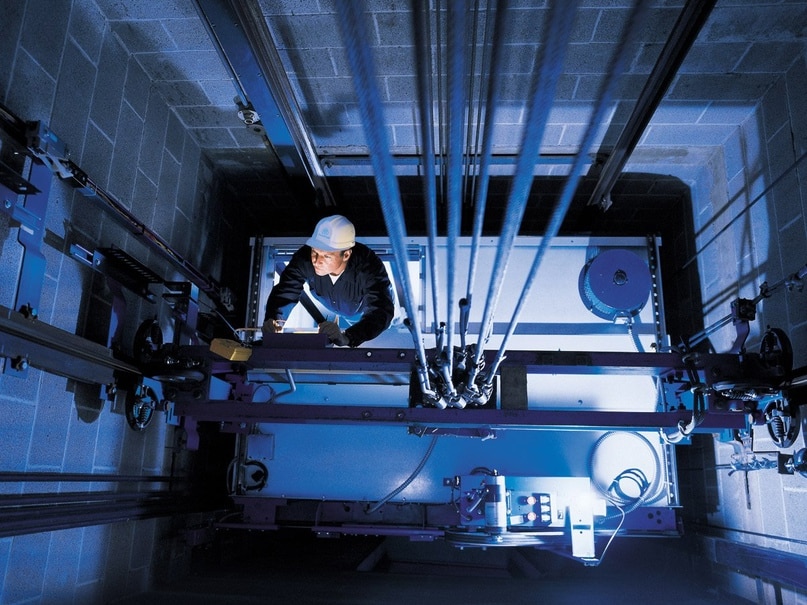
When we think of elevators, we usually imagine them inside tall buildings, malls or hotels. But elevators are not just for land structures but they are also used at sea. These are known as marine elevators, and they play an important role in ships, offshore platforms and yachts. Whether it’s for moving people or goods, marine elevators are designed to work in challenging sea environments where space is limited and safety is crucial.
In this blog, we’ll explain what a marine elevator is, how it works, where it’s used and the major benefits it offers, especially for marine operations in Dubai and the wider Gulf region. Let’s dive in.
What Is a Marine Elevator?
A marine elevator is a specialized lift system installed on ships, vessels, offshore oil rigs or yachts. Unlike regular elevators, marine elevators are built to handle the motion of the sea, high humidity, saltwater exposure and limited space. They must be durable, compact and able to operate safely in constantly moving conditions.
Main Features of a Marine Elevator:
- Corrosion-resistant materials (like stainless steel or marine-grade aluminum)
- Compact design for narrow ship layouts
- Smooth operation even with ship movement
- Safety mechanisms designed for marine use
- Custom configurations for crew, cargo or passenger use
Marine elevators are not just luxury additions; but they are essential tools that help to improve productivity, comfort, and safety at sea.
Where Are Marine Elevators Used?
Marine elevators are used in several types of sea-based environments. Let’s look at the most common places you’ll find them:
1. Cargo Ships
In large cargo vessels, marine elevators are often used to move crew members or tools between different decks. They make working conditions easier and improve efficiency.
2. Cruise Ships
On cruise ships, marine elevators transport passengers across multiple levels. These lifts offer comfort and accessibility, especially for elderly passengers or those with mobility needs.
3. Yachts
High-end private yachts in Dubai and across the UAE often include compact passenger elevators. These lifts provide a luxurious touch and also enhance accessibility.
4. Offshore Platforms
Oil rigs and marine platforms need elevators to transport tools, machinery and personnel. Time and safety are vital in these industries, which in turn make marine elevators essential.
5. Naval and Military Ships
On military vessels, elevators are used for moving weapons, equipment and personnel efficiently across decks.
Benefits of Marine Elevators
Marine elevators are much more than just vertical transport systems. They provide real value in many ways, from improving daily operations to enhancing luxury.
1. Improved Accessibility
Marine elevators make it easy for people to move between decks, especially in cruise ships, yachts and offshore accommodation units. This is especially important for crew members or passengers with physical challenges.
2. Time and Labor Savings
Manually carrying tools, equipment or luggage across multiple decks is time-consuming and exhausting, and on the other hand, a marine elevator saves time and reduces physical effort.
3. Safety
Marine elevators also help to prevent injuries caused by lifting or carrying heavy items up and down stairs on moving ships. Safety features ensure stable movement, even in rough waters.
4. Space Efficiency
Marine elevators are designed to fit into tight spaces. They are compact, modular, and can be customized to match the layout of any ship.
5. Luxury and Comfort
In private yachts and high-end cruise liners, elevators add a touch of luxury. They also enhance the experience of passengers by providing easy and comfortable access to all levels.
6. Durability
Along with this, marine elevators are made with corrosion-resistant materials and sealed components to withstand extreme marine environments, including saltwater and humidity.
Types of Marine Elevators
Marine elevators come in different types, on the basis of their use and design. Here are the most common types:
1. Passenger Elevators
Used to transport people on cruise ships, ferries or yachts. These lifts are designed with comfort, safety and aesthetics in mind.
2. Service Elevators
These are used to move housekeeping or kitchen items on hospitality vessels. They are smaller but very efficient.
3. Cargo or Freight Elevators
These heavy-duty lifts are used on cargo ships and offshore rigs to move equipment, goods and machinery between decks.
4. Dumbwaiters
Small elevators are mainly used to move food, documents or tools in a ship’s kitchen, officer mess or engineering rooms.
Why Marine Elevators Are Popular in Dubai
Dubai is known for its thriving maritime industry, luxury yachts and offshore operations. Marine elevators have become popular in this region for several reasons:
- Yachting Culture: Dubai Marina is home to hundreds of luxury yachts and many of which are now equipped with passenger elevators.
- Tourism Growth: With a rising number of cruise liners docking in Dubai, the demand for accessible and luxurious marine transport is high.
- Offshore Oil & Gas: Dubai and the UAE operate several offshore platforms in the Arabian Gulf where marine elevators are crucial for smooth daily operations.
- Marine Innovation: As Dubai positions itself as a smart city, marine engineering is also evolving. Upgraded vessel designs now often include advanced elevator systems.
Key Considerations When Installing a Marine Elevator
Installing a marine elevator requires expert knowledge and planning. Here are some important factors to consider:
- Space Availability: Ships have limited space, so elevator systems must be compact and efficient.
- Marine Environment: The lift must be corrosion-resistant and able to perform under saltwater conditions.
- Load Capacity: The type of cargo or number of passengers must match the elevator’s design capacity.
- Power Supply: Power fluctuations at sea need to be managed with backup systems and safety mechanisms.
- Compliance with Marine Standards: Elevators must meet marine safety and engineering standards (like ABS, Lloyd’s Register or DNV certification).
- Maintenance and Servicing: Regular maintenance is crucial due to the harsh marine environment.
Trends in Marine Elevator Technology
Technology in marine elevators has advanced over the years. Some of the latest trends include:
- Smart Controls: Touch panels, remote control operation and automatic call systems.
- Energy Efficiency: Low-energy motors and power-saving designs.
- Custom Design: Modern elevators can be customized in style, material and function, especially for private yachts or luxury cruises.
- Noise Reduction: Silent motors and smooth operation for a more comfortable ride.
- Eco-Friendly Materials: Use of sustainable components that resist corrosion without harming the environment.
These innovations reflect the changing expectations of both commercial and private marine users, especially in places like Dubai where design, performance and technology go hand in hand.
Conclusion
To sum up, a marine elevator may seem like a small part of a ship’s design, but it plays a big role in improving efficiency, safety, comfort and value. From moving heavy cargo on oil platforms to adding luxury to yachts cruising through Dubai Marina, marine elevators are becoming more common and more advanced.
Whether it’s for a cargo ship, yacht, cruise liner or offshore platform, choosing the right marine elevator is a smart investment. If you are looking for a reliable partner to design and install marine elevators that are durable, safe, and customized for marine environments, V-Tech Group is here to help.
With a strong track record and deep understanding of marine and industrial solutions, we offer customized elevator systems that meet the unique challenges of the marine industry in Dubai and the wider UAE region. Trust us to elevate your operations at sea.



